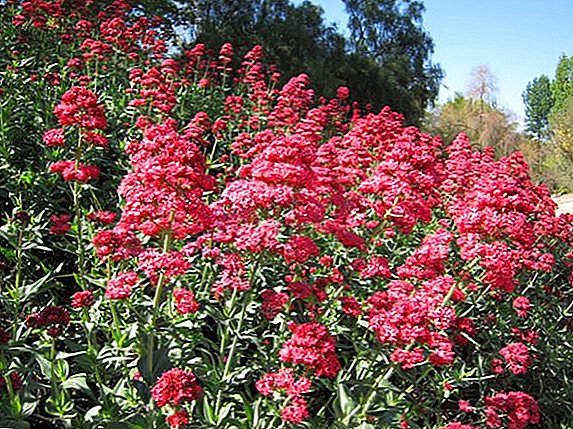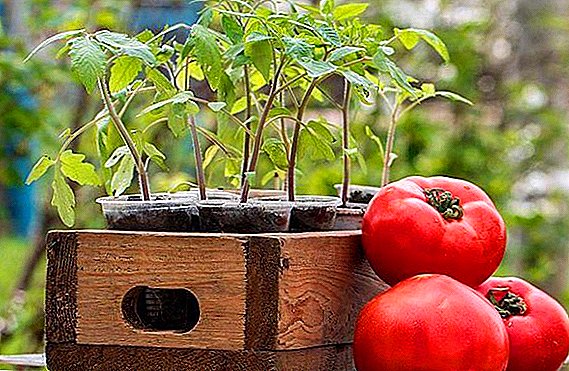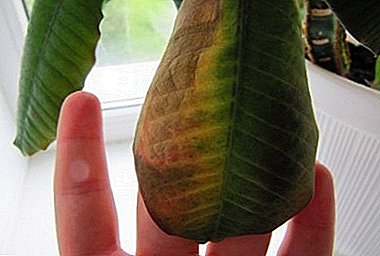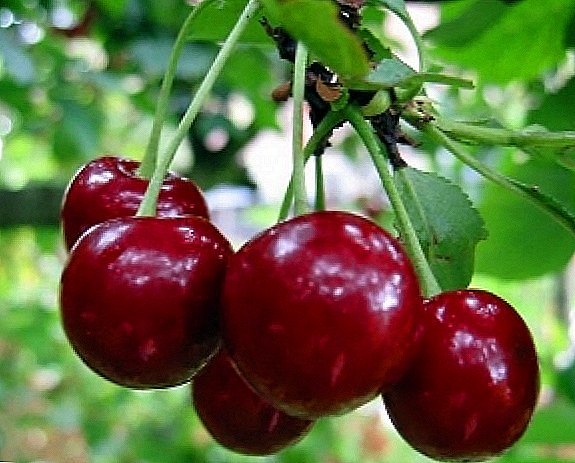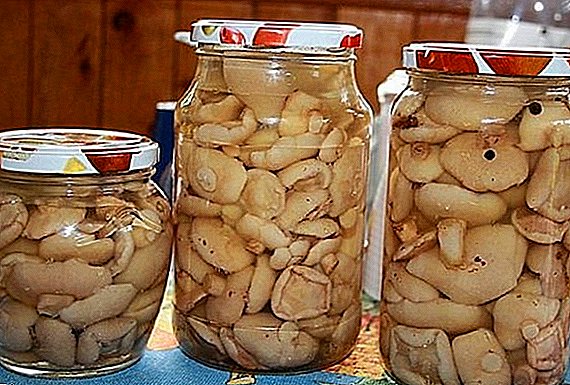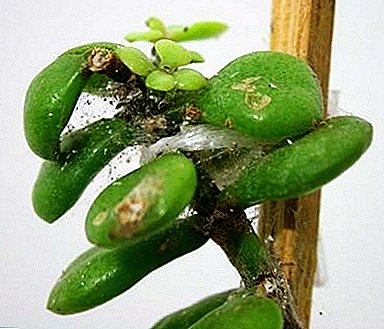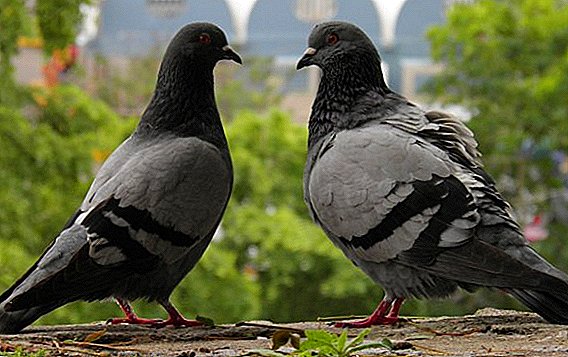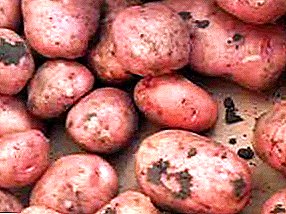
Mid-season potato varieties are popular among gardeners, because the results of the work can be assessed in mid-summer.
One of these varieties is the Azhur variety, it was brought out by Russian scientists - breeders as a replacement for some European varieties that are in great demand.
Read in our article a detailed description of the variety, the main characteristics and characteristics of potato farming. Meet the predisposition to disease and resistance to attack by pests.
Variety description
| Grade name | Openwork |
| general characteristics | medium early table variety with beautiful oval tubers of the trade dress, well kept |
| Gestation period | 70-80 days |
| Starch content | 14-16% |
| Mass of commercial tubers | 95-115 |
| The number of tubers in the bush | 7-13 |
| Yield | 450-500 |
| Consumer quality | good taste, suitable for salads and roasting |
| Recumbency | 95% |
| Skin color | pink |
| Pulp color | light yellow |
| Preferred growing regions | any |
| Disease resistance | resistant to cancer and scab, moderately resistant to late blight |
| Features of growing | standard agricultural technology |
| Originator | agricultural company "SeDek" (Russia) |
 Potato "Openwork" - medium-early variety, from the appearance of the first shoots to technical maturity (this is the moment when the potato has a certain size and dense skin that protects root crops) passes about 70 - 80 days, conditional maturity (potatoes of normal size for consumption, but the skin is thin, fragile, lagging behind the tubers) comes earlier.
Potato "Openwork" - medium-early variety, from the appearance of the first shoots to technical maturity (this is the moment when the potato has a certain size and dense skin that protects root crops) passes about 70 - 80 days, conditional maturity (potatoes of normal size for consumption, but the skin is thin, fragile, lagging behind the tubers) comes earlier.
Potatoes ready for harvesting are recognized by the bush - it turns yellow and falls off. Perederzhivat potatoes in the ground is not necessary, it can damage the storage, some pathologies will develop. It is necessary to mark varieties at the site in order to more easily navigate with the time of digging.
Read more about the time and storage temperature of potatoes, about possible problems. And also about how to store the roots in the winter, on the balcony, in drawers, in the refrigerator, in peeled form.
Root "Azhura" have an elongated, oval shape, medium size, about 9 cm in length. Tuber weight - from 90 g to 120 g. The peel has a deep pink color and a dense, smooth texture. The eyes are small, are on the surface of the tubers, which facilitates processing (cleaning, washing, grinding).
The table below presents indicators of such characteristics as the commodity mass of the tuber and the percentage expression of the keeping quality of potatoes of different varieties, for comparison:
| Grade name | Mass of commodity tubers (grams) | Recumbency |
| Openwork | 95-115 | 95% |
| Serpanok | 85-145 | 94% |
| Lady claire | 85-110 | 95% |
| Veneta | 67-95 | 87% |
| Lorch | 90-120 | 96% |
| The hostess | 100-180 | 95% |
| Labella | 80-100 | 98% |
| Riviera | 100-180 | 94% |
Potato flesh has a light yellow color due to the high content of carotene. This yellow pigment in the body acts as an antioxidant.
The amount of starch in tubers - 16%. This starch content does not allow the tubers to boil over. The amount of starch depends on weather conditions - in hot weather starch accumulates more than in rainy (range +/- 2%). Also, starch is influenced by some dressings.
Azhur "has a sprawling tall bush, up to 50 cm in height. The leaves grow at intervals, have a typical shape for potatoes, large sizes, dark green color. Leaf structure - no pubescence, wrinkled. The waviness of the edge is weak. The flowers are large, the corolla has a pale purple color. Root crops develop many (about 20 pieces).
Climatic zones
Grow “Openwork” mainly in the Central region of the Russian Federation. Due to the mid-ripeness, it can be grown throughout the territory of the Russian Federation and near countries located. In the southern regions it is possible to grow “Azhura” twice per season.. "Openwork" tolerates drought.
Specifications
It is considered a high-yielding variety. Under favorable conditions and proper care it is possible to collect up to 50 tons per 1 ha. In the first digging at the age of potatoes for about 40 days, you can collect about 130 centners per hectare. Virtually no small tubers, potatoes are aligned in size.
Productivity is one of the main indicators for growing potatoes. Compare this characteristic variety Azhur with other varieties:
| Grade name | Yield |
| Openwork | 450-500 c / ha |
| Grenada | 600 kg / ha |
| Innovator | 320-330 c / ha |
| Melody | 180-640 c / ha |
| The hostess | 180-380 c / ha |
| Artemis | 230-350 c / ha |
| Ariel | 220-490 c / ha |
| Vector | 670 c / ha |
| Mozart | 200-330 c / ha |
| Borovichok | 200-250 centners / ha |
"Openwork" is a table grade. Due to the average starch content, the tubers do not boil soft, ideal for cooking soups, salads, whole cooking, frying. "Openwork" does not darken after cooking.
Attention! The peel of potatoes contains more beneficial trace elements than the tuber itself. Cooking or baking in the peel will be the most useful way of cooking.
Potatoes contain a lot of nutrients, most of all - vitamin C. Juice of raw potatoes will help reduce pressure. It is used in cosmetology as a mask for edema and for skin whitening. "Openwork" has a rich taste and a pronounced aroma. Reviews about the taste of potatoes only positive.
 Read on our site all about the properties of potatoes.
Read on our site all about the properties of potatoes.Why is solanine dangerous, what are the benefits and harms of raw potatoes, than the juice and sprouts of this vegetable are good for health.
A photo

Advantages and disadvantages
Principal flaws are not detected. According to the manufacturer, it has an average resistance to mechanical damage and late blight of tubers.
The merits of the variety:
- abundant harvest of large root crops;
- smooth beautiful tubers with superficial eyes;
- high taste qualities;
- it is not exacting to soil type;
- drought resistant;
- high resistance to certain diseases;
- good and long storage.
The variety was bred by our compatriots in the image of a European popular variety relatively recently. In the State Register of the Russian Federation has not yet been included.
Features of growing
"Openwork" like most varieties has the need to be illuminated by sunlight, this should be done 2 weeks before planting. Several times during the season with a warm winter, it is necessary to cut off the shoots. Planting is carried out from the end of April to May, when the soil has a temperature at a depth of 10 cm, about 13 degrees.
The soil from autumn must be disinfected, fertilized and dug up with the removal of weeds. In the spring you should only dig it out - puff it up.
IMPORTANT! Plots of potato plantations should not border on the planting of tomatoes, should also be planted potatoes wali from apple trees.

Mulching
Read more about how to feed potatoes, when and how to apply fertilizer, how to do it when planting.
After planting, potatoes can be treated with means to remove and slow the growth of weeds. When the first shoots appear, it will be impossible to do this. To prevent the emergence of new weeds used mulching between rows. “Openwork” tolerates drought well, however, in dry summer some irrigation will not hurt.
Potatoes should spud, loosen, remove excess grass. Spraying required several times per season. microbiological fertilizers (1 - at emergence of shoots, 2 - during flowering). Flowers should be removed so that all growth goes to the roots.
 We have prepared for you a whole series of articles on how to grow potatoes.
We have prepared for you a whole series of articles on how to grow potatoes.Read all about modern potato business and Dutch technologies, how to grow early varieties and get a crop without weeding and hilling.
As well as interesting methods: under the straw, in barrels, in bags, in boxes and from seeds.
Storage
This variety should be stored in a dark room (basement) with a temperature not exceeding 3 degrees of heat. The temperature should be constant. Potatoes are stored well, high yield.
Diseases and pests

Verticillosis
As for insect pests, the Colorado beetles, the wireworm, the potato moth, and the bearfish are most often the threat of potato planting.
Read all about modern methods of dealing with them:
- How to get rid of the wireworm in the garden.
- Chemistry and folk methods against the Colorado potato beetle and its larvae:
- Aktara.
- Corado.
- Prestige.
- Regent.
- What to use against Medvedka: industrial preparations and folk recipes.
- We derive the potato mole: part 1 and part 2.
From pests and for the prevention of diseases recommended spraying in dry weather microbiological preparations.
Below in the table you will find links to articles on potato varieties ripening at different times:
| Middle late | Medium early | Late-ripening |
| Aurora | Black Prince | Nikulinsky |
| Skarb | Nevsky | Asterix |
| Courage | Darling | Cardinal |
| Ryabinushka | Lord of the expanses | Kiwi |
| Blue | Ramos | Slav |
| Zhuravinka | Taisiya | Rocco |
| Lasock | Lapot | Ivan da Marya | Magician | Caprice | Picasso |



